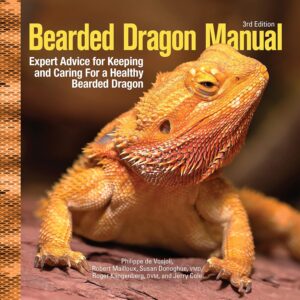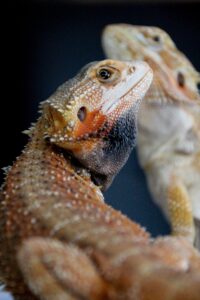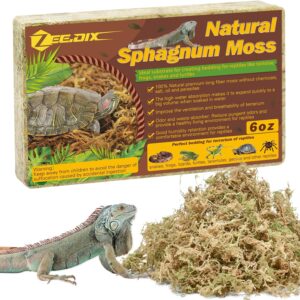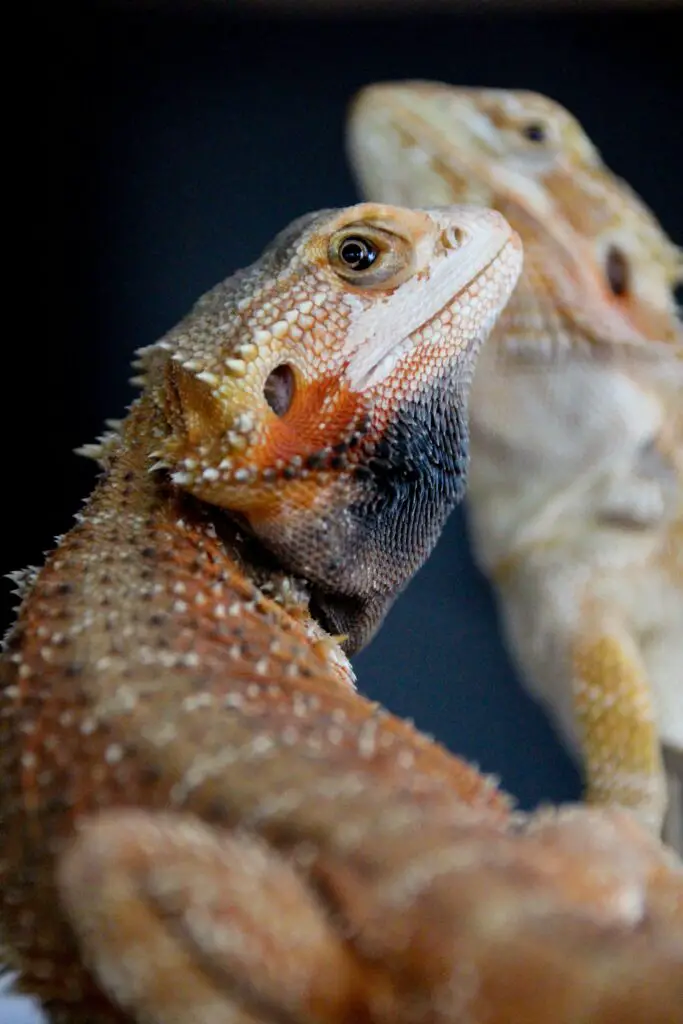Bearded dragon sperm plug
Bearded dragon sperm plug: Bearded dragons, scientifically known as Pogona vitticeps, are fascinating reptiles that have gained popularity as exotic pets due to their captivating appearance and docile nature. These lizards are native to the arid regions of Australia and have become beloved companions for reptile enthusiasts around the world. One intriguing aspect of bearded dragon biology is their unique reproductive behavior, which sets them apart from other lizard species.
Definition of a Bearded Dragon
A bearded dragon is a medium-sized lizard belonging to the family Agamidae. They earned their name from their ability to puff out and darken the skin under their throat when they feel threatened or excited, resembling a beard. With an average length of 18-24 inches, bearded dragons possess a stout body covered in rough scales that provide protection against predators and harsh environmental conditions.
Their coloration varies greatly across individuals, ranging from shades of brown and gray to vibrant oranges, yellows, and reds. This adaptability makes them adept at blending into their desert surroundings or displaying striking hues during mating rituals or social interactions.
Overview of Reproductive Behavior in Bearded Dragons
 The reproductive behavior of bearded dragons is complex and intricate. Like many reptiles, they exhibit sexual dimorphism, with males typically larger in size than females and displaying more vibrant colors to attract potential mates. Understanding their reproductive behavior sheds light on the fascinating mechanisms that ensure successful breeding within this species.
The reproductive behavior of bearded dragons is complex and intricate. Like many reptiles, they exhibit sexual dimorphism, with males typically larger in size than females and displaying more vibrant colors to attract potential mates. Understanding their reproductive behavior sheds light on the fascinating mechanisms that ensure successful breeding within this species.
In general, bearded dragons utilize visual displays and physical behaviors as part of courtship rituals. Male dominance displays involve head bobbing motions accompanied by arm waving or arm flaring to assert dominance over potential rivals while simultaneously capturing the attention of receptive females.
Females signal receptivity by adopting submissive postures such as head tilting, flattening their bodies against the ground, and waving their arms slightly. Once courtship is established, copulation takes place, during which the male mounts the female’s back and tightly grips onto her with specialized claspers located at the base of his tail.
The male then inserts his paired hemipenes into the female’s cloaca to facilitate sperm transfer. This process, combined with subsequent reproductive events unique to bearded dragons, paves the way for an intriguing phenomenon – the formation of a sperm plug.
Reproduction in Bearded Dragons
Mating behavior and courtship rituals
Bearded dragons, scientifically known as Pogona vitticeps, exhibit fascinating mating behavior and intricate courtship rituals. Prior to copulation, males engage in conspicuous displays of dominance to assert their reproductive prowess.
This display often involves head bobbing, where the male bobs its head up and down rhythmically. The head bobbing is a visual signal that communicates dominance and territoriality to both rival males and receptive females.
Male dominance displays and head bobbing
Male bearded dragons engage in head bobbing as a means to establish social hierarchies and secure mating opportunities. This behavior can range from slow rhythmic nods to more rapid and vigorous movements, depending on the individual’s confidence and intent. The intensity of head bobbing can be influenced by various factors such as the presence of other males or receptive females in close proximity.
Female receptivity signals
While male bearded dragons engage in elaborate displays of dominance, females also communicate their receptivity through specific behavioral signals. A receptive female will exhibit submissive behaviors such as flattening her body against the ground, raising her tail slightly, and tilting her head downward. These postures indicate her willingness to accept a potential mate’s advances.
Copulation process
Once both male dominance displays have been performed successfully, copulation between bearded dragons proceeds with remarkable precision. The male will mount the female from behind while gripping onto her back with his legs to maintain stability during copulation. This mounting behavior allows for precise alignment of their cloacal openings – the multi-purpose opening used for excretion, reproduction, and urination.
During copulation, the male will insert his hemipenes into the female’s cloaca – an organ analogous to mammalian genitalia. Hemipenes are paired, erectile structures located within the male’s tail base.
This dual-penis adaptation allows for successful sperm transfer into the female reproductive tract. The copulation process is a crucial step in bearded dragon reproduction, facilitating the transfer of genetic material necessary for fertilization.
The aforementioned mating behavior and courtship rituals, along with the intricate copulation process, highlight the evolutionary adaptations that have shaped bearded dragons’ reproductive strategies. Understanding these complex behaviors provides valuable insights into their fascinating reproductive biology.
Sperm Plug Formation
What is a bearded dragon sperm plug?
The phenomenon of a sperm plug, also known as a copulatory plug or seminal plug, is an intriguing aspect of bearded dragon (Pogona vitticeps) reproduction. Essentially, it is a solid mass that forms after copulation within the female’s reproductive tract.
This gelatinous structure serves various purposes and has been observed in several reptile species. While its specific function may vary across taxa, its overall goal remains consistent – to ensure successful fertilization and reduce the risk of sperm competition.
Definition and Purpose
A sperm plug can be defined as a viscous substance that hardens over time, effectively sealing the female bearded dragon’s cloaca after mating with a male. The primary purpose of this plug is twofold: to physically block access to the female’s reproductive tract from other males’ sperm and to increase the likelihood of fertilization success for the male who deposited it. By forming this barrier, the male aims to secure his genetic legacy by preventing rival males from impregnating the same female.
Similarities to Other Reptile Species
 Sperm plugs are not exclusive to bearded dragons; they have also been documented in various other reptile species. For instance, similar structures have been observed in lizards such as geckos, skinks, and iguanas. Additionally, snakes like pythons and boas also exhibit this intriguing reproductive trait.
Sperm plugs are not exclusive to bearded dragons; they have also been documented in various other reptile species. For instance, similar structures have been observed in lizards such as geckos, skinks, and iguanas. Additionally, snakes like pythons and boas also exhibit this intriguing reproductive trait.
While there may be slight variations in composition and structure among these different reptilian groups, their core purpose remains consistent—to enhance reproductive success for males. The formation process of a bearded dragon’s sperm plug involves intricate biological mechanisms driven by hormonal cues triggered during copulation.
Understanding its composition provides insights into how it fulfills its role in reproduction. The composition of a bearded dragon’s sperm plug consists of a complex mixture of sperm, proteins, and mucus-like substances.
After copulation, the male ejaculates semen into the female’s cloaca. This seminal fluid contains spermatozoa that are responsible for fertilization.
Alongside the sperm cells, various proteins and enzymes are present, which may serve to protect and nourish the sperm as they traverse the female reproductive tract. Over time, this mixture undergoes a transformation process known as hardening or coagulation within the female’s reproductive tract.
The exact timeframe for this process can vary between individuals but typically takes several hours to complete. As it solidifies, the originally fluid blend transforms into a gel-like structure that adheres to the walls of the cloaca and surrounding tissues.
This hardening phenomenon is crucial for maintaining the structural integrity of the plug. It ensures that it remains securely in place to fulfill its intended functions while also facilitating its eventual removal when necessary during natural processes or through gentle manipulation if required for research purposes.
Overall, understanding how bearded dragon sperm plugs form sheds light on their purpose in reproduction and highlights their similarity to similar structures observed in other reptile species. By comprehending their composition and hardening process over time, we gain valuable insights into these fascinating mechanisms underlying reptilian reproductive biology.
Function and Significance of Sperm Plugs in Bearded Dragons
Preventing Sperm Competition: Ensuring Fertilization Success
In the intricate world of reptilian reproduction, bearded dragons have evolved a fascinating mechanism to prevent sperm competition and ensure that their own genetic material has the best chance of fertilizing the female’s eggs. The presence of a sperm plug serves as a physical barrier, effectively blocking access to the female’s reproductive tract from other males’ sperm. This mechanism grants an advantage to the male who deposited the plug by increasing his chances of successful fertilization.
By sealing off the path to potential competitors, he safeguards his own reproductive success. The formation of a hardened sperm plug is a strategic move executed by male bearded dragons during copulation.
Once inserted into the female’s cloaca, this proteinaceous plug solidifies over time, creating an impenetrable barrier for other males attempting copulation with that female. By physically blocking access to competing sperm, bearded dragons employ an evolutionary adaptation that maximizes their reproductive fitness.
Extended Storage of Viable Sperm: Unleashing Delayed Fertilization Potential
The presence of a sperm plug in bearded dragons also serves as an ingenious method for extended storage of viable sperm within the female’s reproductive tract. This remarkable phenomenon allows females to store genetic material from multiple matings over an extended period, ensuring delayed fertilization potential.
Due to this remarkable adaptation, successful mating doesn’t necessarily result in immediate fertilization but rather opens up possibilities for delayed reproduction. Within the plug itself lies a reservoir of viable sperm that can survive for several weeks or even months after copulation has taken place.
This prolonged storage enables bearded dragon females to control when they utilize stored sperm for fertilizing eggs and initiating reproduction. By retaining control over when and which male’s genetic material is used, female bearded dragons exhibit a remarkable ability to optimize reproductive success in response to environmental conditions or the availability of resources.
The function and significance of sperm plugs in bearded dragons are multi-faceted. They play a crucial role in preventing sperm competition by effectively blocking access to the female’s reproductive tract from other males’ sperm, ensuring that only the male who deposited the plug has a higher chance of fertilization success.
Moreover, these plugs enable extended storage of viable sperm within the female’s reproductive tract, providing delayed fertilization potential that allows females to strategically time reproduction based on various factors. The intricate mechanisms associated with bearded dragon sperm plugs highlight the evolutionary adaptations employed by these fascinating reptiles and shed light on their remarkable reproductive strategies.

Sperm Plug Removal
Natural removal process
Once a female bearded dragon has been successfully inseminated and the sperm plug is deposited in her cloaca, a natural process is set in motion to expel the plug from her reproductive tract. The female plays an active role in removing the plug through her grooming behaviors.
Bearded dragons are fastidious creatures, often seen licking themselves to keep clean. This grooming behavior serves an additional purpose when it comes to sperm plug removal.
The female’s licking and cleaning actions around the cloacal region help break down and loosen the hardened plug over time. Through gentle abrasion, as well as the mucus produced during grooming, the consistency of the plug gradually softens.
As a result, small portions of the plug are dislodged and expelled with each grooming session. This natural removal process can take anywhere from a few days to several weeks, depending on various factors such as environmental conditions and individual health.
Artificial removal techniques
 In some cases where a bearded dragon is experiencing difficulty with naturally removing the sperm plug or if there are concerns about blockage or infection, artificial removal techniques may be necessary. It is important to note that these techniques should only be performed by experienced reptile handlers or veterinarians who understand reptile anatomy and proper handling procedures.
In some cases where a bearded dragon is experiencing difficulty with naturally removing the sperm plug or if there are concerns about blockage or infection, artificial removal techniques may be necessary. It is important to note that these techniques should only be performed by experienced reptile handlers or veterinarians who understand reptile anatomy and proper handling procedures.
One method involves gentle manipulation of the cloacal area using sterile cotton swabs or tweezers moistened with warm water. Care must be taken not to cause any harm or discomfort to the female during this procedure.
By carefully applying pressure around the edges of the cloaca and gradually working towards its center, it may be possible to assist in breaking down and dislodging portions of the plug for subsequent natural expulsion. Another option is providing warm baths for females that require assistance in removing their sperm plugs.
Bearded dragons are known to enjoy soaking in shallow water, and this behavior can aid in softening the plug and promoting its natural expulsion. The water should be lukewarm, not too hot or cold, and the female should be allowed to soak for short periods, usually no longer than 15-20 minutes.
Gentle patting or massaging of the cloacal area during the bath may also help stimulate plug removal. It is essential to exercise caution when using any artificial removal techniques, as excessive force or improper handling can cause harm to the female bearded dragon.
Consulting with an experienced reptile veterinarian is highly recommended before attempting any artificial removal methods. Remember that patience is key during the sperm plug removal process.
It is crucial to monitor the female’s behavior and health closely throughout this time, ensuring she remains in optimal condition. If there are concerns about prolonged retention of a sperm plug or any associated complications, it is best to seek professional advice from a qualified reptile veterinarian.
To sum up bearded dragon sperm plug
The intricate world of bearded dragon reproduction unveils a fascinating phenomenon known as the sperm plug. This specialized structure, formed after copulation, serves multiple crucial roles in ensuring reproductive success for these reptiles. By summarizing the key points discussed earlier in this article, we can appreciate the significance of sperm plugs and their impact on preventing competition and facilitating successful fertilization.
Preventing Competition
The primary function of the sperm plug is to prevent competition from other males. Once a male bearded dragon mates with a female, he deposits a mixture of sperm, proteins, and mucus-like substances into her cloaca.
As this mixture hardens over time to form a plug, it acts as a physical barrier that blocks access to the female’s reproductive tract from other males’ sperm. This ingenious mechanism not only ensures that the male who deposited the plug has an advantage over rival males but it also guarantees that his genetic material has higher chances of successful fertilization within the female’s body.
Facilitating Successful Reproduction
In addition to preventing competition, sperm plugs play an essential role in facilitating successful reproduction among bearded dragons. The presence of these plugs allows for extended storage of viable sperm within the female’s reproductive tract.
The mixture within the plug protects and nourishes the enclosed sperm cells until they are needed for fertilization. This prolonged storage enables bearded dragons to delay fertilization until optimal conditions arise or until they have sufficient energy reserves for egg development.
Consequently, by strategically conserving their resources and timing their reproductive efforts appropriately, bearded dragons increase their chances of producing healthy offspring that can thrive in their environment. In closing, while discussing reptile reproductive biology may seem esoteric at first glance, exploring topics such as bearded dragon sperm plugs reveals the marvels of nature’s ingenuity.
These unique structures not only prevent competition among males but also facilitate successful fertilization, ensuring the continuation of their species. By unraveling the mysteries of bearded dragon reproduction, we gain a deeper appreciation for these remarkable creatures and the intricate mechanisms they employ to perpetuate life.
Further Reading:
- Carolina Custom Cages Terrarium Review
- 8 Best Basking Rocks for Beardie: What Is the Best Choice?
- 10 Best Thermometers for Beardie: How to Choose the Best One?
- 5 Best Beardie Lighting Setups for Beardie Lovers
- 9 Best Heat Lamps for Beardie: Natural Habitat Provided


